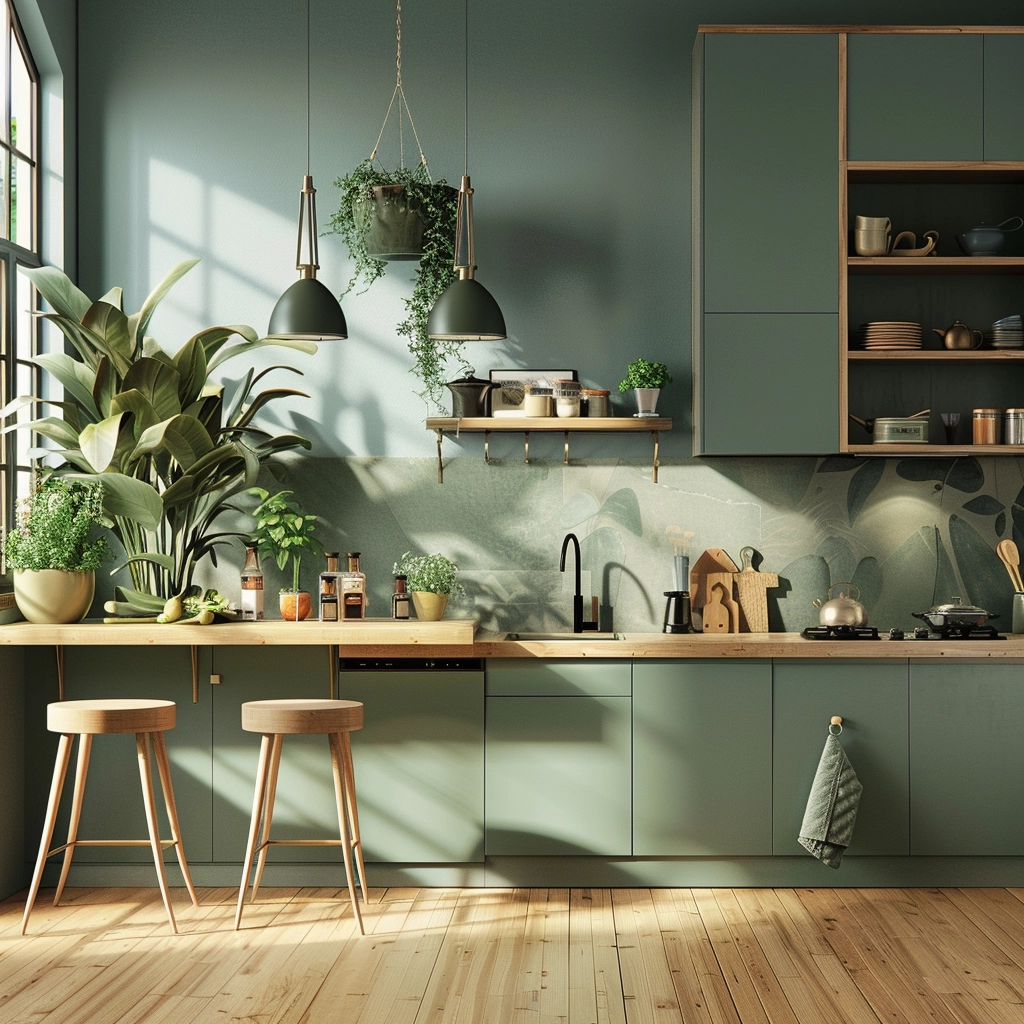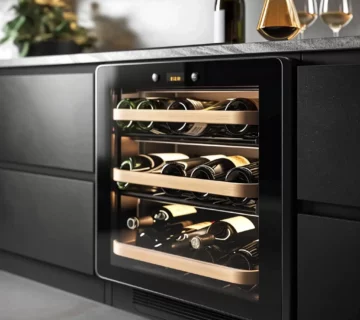The heart of the home deserves a design that’s not only functional but also reflective of your style and the latest trends. In this guide, we delve into innovative kitchen ideas that bring warmth, nature, and timeless elegance into your cooking space through wooden elements, sage green colors, and strategic wood accents.
Introduction to Innovative Kitchen Ideas
Kitchens are more than just places to cook; they’re the center of home life, where families gather, meals are prepared with love, and memories are made. Embracing innovative kitchen ideas such as wooden themes, sage green colors, and wood accents can transform your kitchen into a stylish and welcoming space.
Wooden Kitchen: Timeless Elegance
Benefits of Choosing Wooden Kitchens
Wooden kitchens exude a timeless elegance and warmth, creating a cozy and inviting atmosphere. The natural beauty of wood grain adds character and depth to your kitchen, making each piece unique.
Designing a Modern Wooden Kitchen
Modern wooden kitchens balance the warmth of wood with sleek lines and minimalist designs. Consider combining light woods like maple or birch with darker accents for a contemporary look. Open shelving, integrated appliances, and under-cabinet lighting can modernize the space while highlighting the beauty of the wood.
Sage Green: A Touch of Nature
Why Sage Green is Trending in Kitchen Design
Sage green brings a touch of nature into the kitchen, promoting a sense of tranquility and renewal. This versatile hue pairs beautifully with a variety of materials, including wood, making it a perfect choice for a harmonious kitchen design.
Combining Sage Green with Other Elements
To enhance the natural appeal of sage green, combine it with elements like wooden countertops, white cabinetry, and brass or copper hardware. These combinations can create a balanced and refreshing look that’s both modern and timeless.
Wood Accents in the Kitchen
Enhancing Aesthetics with Wood Accents
Wood accents can add warmth and texture to any kitchen design. Consider wooden beams, a butcher block island, or open wooden shelving to introduce elements of rustic charm or modern sophistication.
Creative Ideas for Wood Accents
For a unique twist, use reclaimed wood for accent walls or as a material for custom cabinetry. Mixing wood types and finishes can add visual interest and depth to your kitchen, making it a standout feature of your home.
Maintaining Your Kitchen’s Beauty
Maintaining the beauty of your wooden and sage green kitchen requires regular care. Protect wood surfaces with the appropriate sealants, and refresh paint as needed to keep your sage green elements vibrant. Regular cleaning and prompt attention to spills will ensure your kitchen remains a stunning focal point in your home.
Conclusion
Innovative kitchen ideas like wooden themes, sage green colors, and wood accents offer endless possibilities for creating a space that’s not only functional but also a true reflection of your style. Whether you’re planning a complete remodel or looking for ways to update your existing kitchen, these ideas can inspire you to embrace innovation and transform your kitchen into a haven of warmth, nature, and elegance.
FAQs
The best types of wood for kitchen cabinetry include oak, maple, cherry, and hickory for their durability, grain patterns, and color variety. Oak is robust and features prominent grain patterns, making it ideal for traditional and rustic designs. Maple is versatile with a subtler grain, suitable for both contemporary and classic kitchens. Cherry wood offers rich, deep colors that darken with age, perfect for luxurious and warm kitchen aesthetics. Hickory stands out for its strong, distinctive grain and color variation, ideal for a more rustic look.
To incorporate sage green into your kitchen without overwhelming the space, use it as an accent color. Consider sage green for lower cabinets or an island, while keeping upper cabinets white or in a light wood finish to maintain a sense of openness. Alternatively, sage green backsplashes, kitchen accessories, or wall paint can add a pop of color. Balance sage green with neutral tones and natural materials to create harmony and avoid color saturation.
Eco-friendly materials for kitchen design include bamboo, reclaimed wood, recycled glass countertops, and linoleum flooring. Bamboo is a fast-growing, sustainable resource that's durable and moisture-resistant, making it ideal for cabinetry and flooring. Reclaimed wood adds character and reduces the demand for new lumber. Recycled glass countertops are durable, non-porous, and made from post-consumer materials, offering a unique aesthetic. Linoleum is made from natural, renewable materials like linseed oil and wood flour, making it a sustainable choice for flooring.
To make a small kitchen appear larger, focus on light colors, reflective surfaces, and efficient storage. Use light paint colors for walls and cabinets to reflect more light and give an airy feel. High-gloss finishes and mirrored backsplashes can also enhance the sense of space by reflecting light. Opt for open shelving or glass-front cabinets to reduce visual clutter. Incorporate smart storage solutions like pull-out pantries, corner drawers, and multi-tiered organizers to keep countertops clear and maximize space.
Smart kitchen appliances worth investing in include smart refrigerators, ovens, and dishwashers. Smart refrigerators can keep track of your groceries, suggest recipes based on what's inside, and alert you when you're running low on essentials. Smart ovens offer precision cooking with remote monitoring and control via smartphone apps, making meal preparation more efficient. Smart dishwashers can be programmed to run at the most energy-efficient times and can alert you when your dishes are clean, saving time and energy.
To maintain and care for wooden surfaces in the kitchen, regularly clean them with a soft, damp cloth and mild detergent. Avoid harsh chemicals or abrasive cleaners that can damage the wood's finish. Protect wood surfaces from water damage by wiping up spills promptly. Use coasters under wet dishes and appliances to prevent water rings. Apply a food-safe mineral oil or wood conditioner periodically to nourish the wood and maintain its luster. For butcher blocks or cutting surfaces, sand down and re-oil the surface as needed to remove cuts and keep them hygienic.



No comment